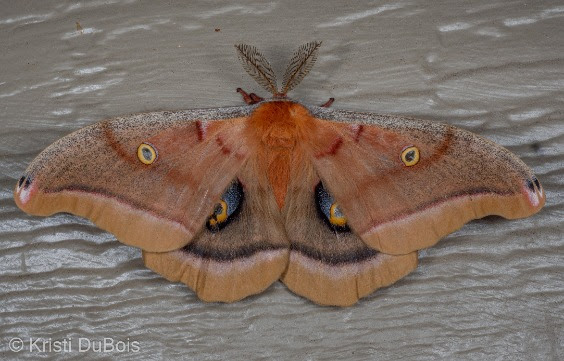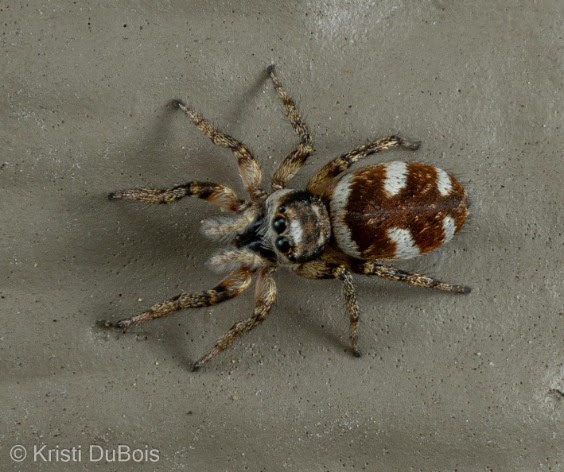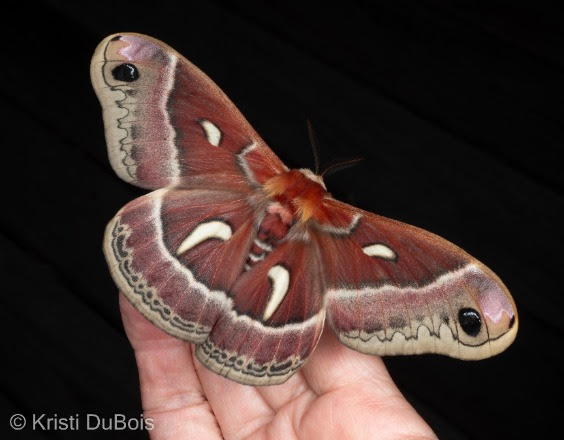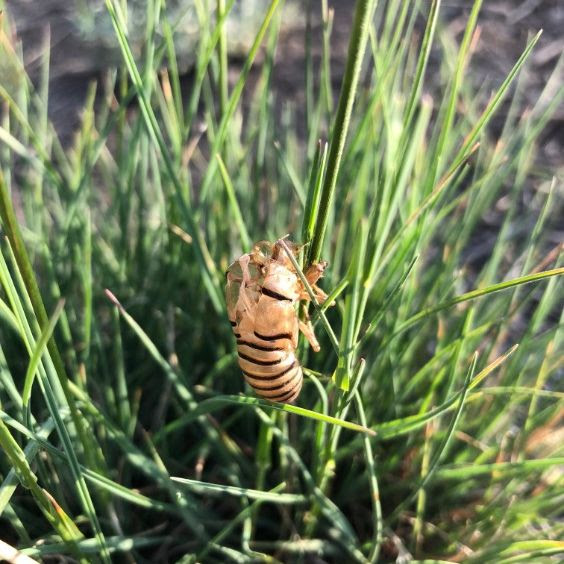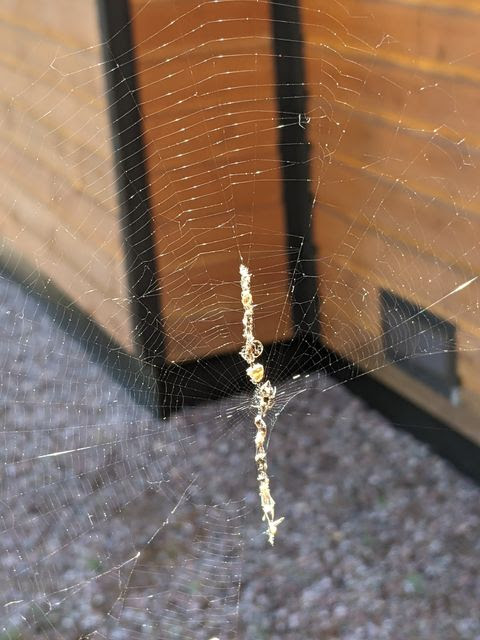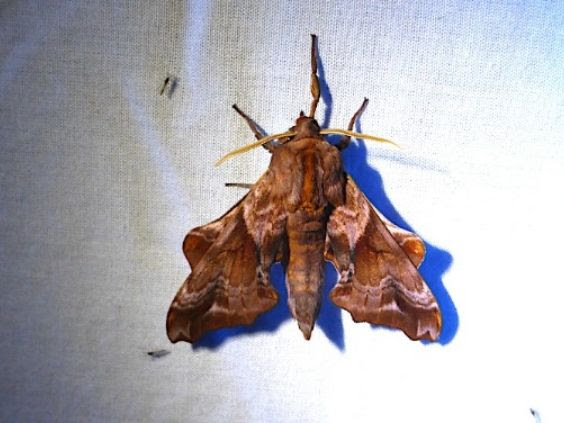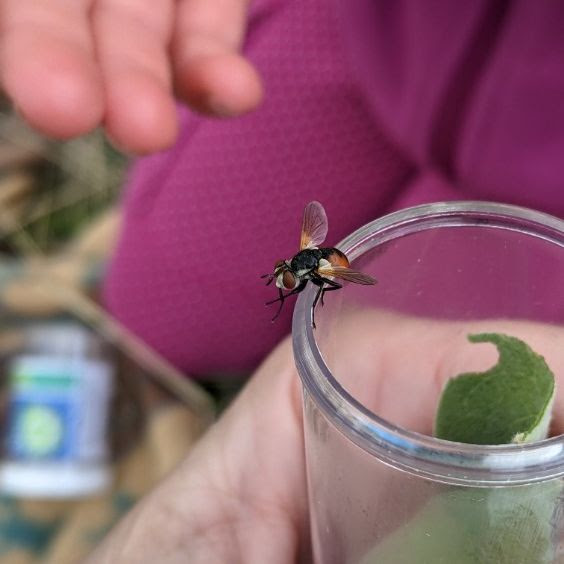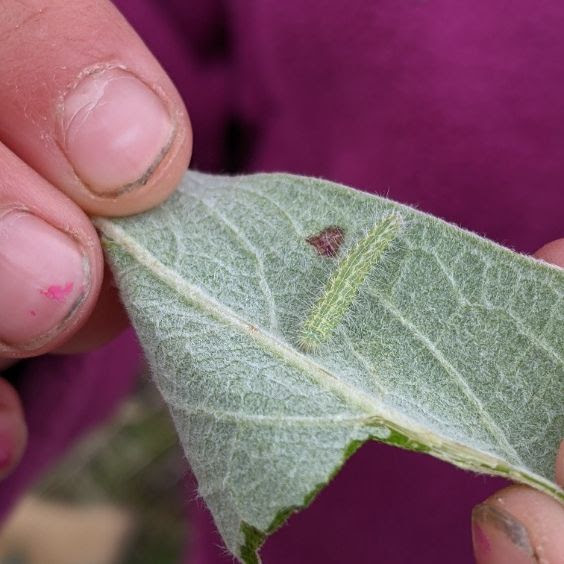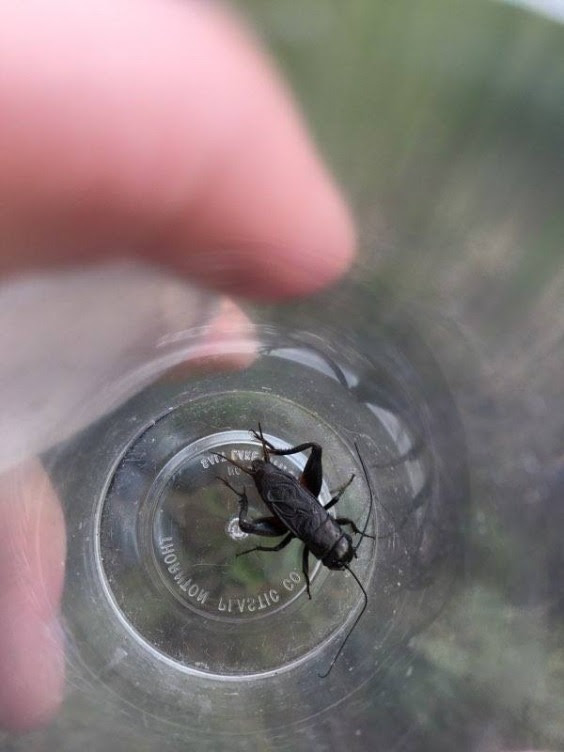As you can see, unlike many caterpillars that venture out on their own to feed, these guys like company and spend a large part of their caterpillar life with a bunch of friends in […]
Read MoreWhat’s Buzzin’
What can you see around Western Montana right now?
Polyphemus Silkmoth, male (Antheraea polyphemus)
Kristi discovered a Polyphemus outside her home, while Rose found one downtown outside A Carousel for Missoula. This is our most widespread silkmoth in the US. It is also one […]
Read MoreZebra Jumping Spider (Salticus scenicus)
If you spend time outside gardening, you’ve likely run into this beautiful spider before. Like other jumping spiders, Zebras have great eyesight. Their eyes can actually form detailed images, making […]
Read MoreCeanothus Silkmoth (Hyalophora euryalus)
This massive moth can be found from British Columbia east to western Montana, south through Washington, western Oregon, and California to Baja California Sur. There is only one brood a […]
Read MoreCicada Molt (family Cicadidae)
We’re not sure what cicada species this shed exoskeleton belongs to, but it is a very cool find that marks the transition from life underground to aboveground. We have 17 […]
Read MoreTrashline Orbweaver (genus Cyclosa)
Trashline orbweaver spiders get their common name because they’re not the tidiest of spiders, decorating their web with a line of debris (prey remains, plant material, etc.). This “mess” helps […]
Read MoreSmall-eyed Sphinx Moth (Paonias myops)
The name of this sphinx moth is a bit misleading. The moth has normal eyes, not small at all, but the eyelike spots on the hindwings could be considered small. These handsome […]
Read MoreTachinid Fly (genus Gymnosoma)
Tachinid flies are mostly robust flies with spiny abdomens. This group lacks spines on the abdomen, with Gymnosoma meaning “naked body.” Adults sip nectar from flowers, but larvae prefer protein. Of the […]
Read MorePlume Moth Larva (family Pterophoridae)
We believe this is a plume moth caterpillar, a distinctive group of moths that look like a capital “T” or like a glider at rest. Caterpillars are hairy or bristly, various […]
Read MoreSpring Field Cricket (Gryllus veletis)
Spring field crickets are the most common black cricket with a slowish chirp in the spring in many regions—ranging roughly through the northern half of the US. After overwintering as nymphs, […]
Read More
